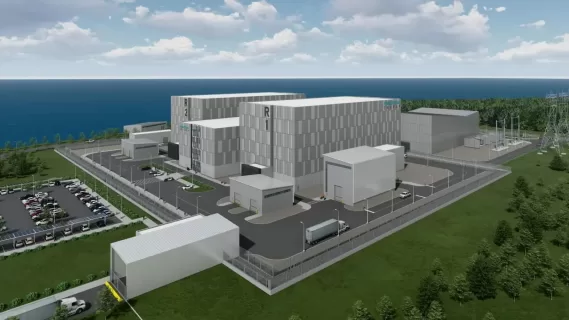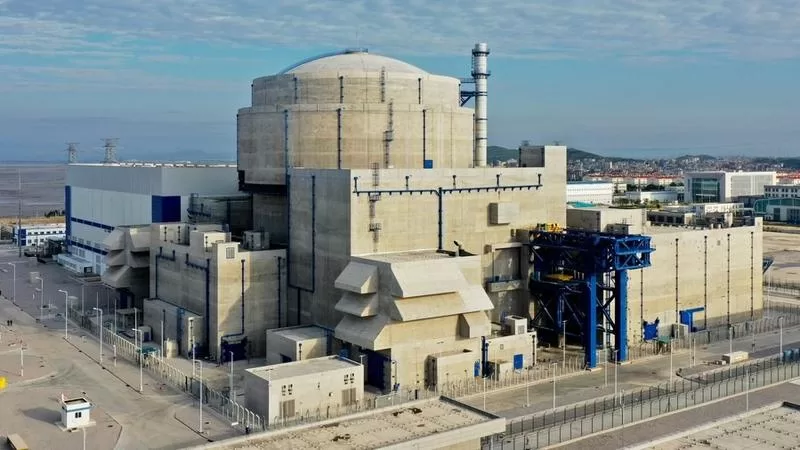Kairos Power has started the construction of the Hermes Low-Power demonstration reactor, US’ First Fourth-gen Nuclear Reactor, in Oak Ridge, Tennessee. Hermes is the first and only fourth generation reactor to be approved for construction by the US Nuclear Regulatory Commission. Hermes will use a TRISO fuel pebble bed design with a molten fluoride salt coolant to demonstrate affordable clean heat production.
According to Kairos Power, it is also the first non-light-water reactor to be permitted in the U.S. in over 50 years and is projected to be operational in 2027.
The Hermes reactor project is being supported through the U.S. Department of Energy’s Advanced Reactor Demonstration Program.
US’ First Fourth-gen Nuclear Reactor Hermes Reactor from Kairos Power
According to a press release by the Office of Nuclear Energy, Hermes reactor is being built to announce the development of the company’s commercial reactor that could be deployed next decade.
Hermes will use a TRISO fuel pebble bed design with a molten fluoride salt coolant to demonstrate affordable clean heat production.
The project was cleared for construction back in December by the U.S. Nuclear Regulatory Commission.
The U.S. Department of Energy will invest up to $303 million to support the design, construction, and commissioning of Hermes through its Advanced Reactor Demonstration Program.
Kairos Power is also partnering with Los Alamos National Laboratory to produce TRISO pebble fuel for the reactor. It also has a cooperative development agreement in place with the Tennessee Valley Authority to provide engineering, operations, and licensing support. The company had recently wrapped up molten salt testing on the company’s first Engineering Test Unit (ETU) at its manufacturing facility in Albuquerque, New Mexico.
The system was the first of three iterations that are being built to help design, construct and operate Hermes.
It is currently constructing a second ETU in New Mexico and will collaborate with Barnard Construction on a third system that will be built adjacent to the Hermes reactor site.
What Makes the Reactor Unique
Rather than water, as used in conventional nuclear reactors, the Kairos Power reactor uses molten fluoride salt as a coolant.
Molten fluoride salts have excellent chemical stability and tremendous capacity for transferring heat at high temperature and retaining fission products that might be released from fuel.
Moreover, the Kairos Power’s reactors use fully ceramic fuel, which maintains structural integrity even at extremely high temperatures. This fuel will be undamaged to well above the melting temperatures of conventional metallic reactor fuels.

The company also says that its reactors have passive safety features, which means that they do not require electricity to remove heat from the core after shutting down.
The reactors have uniquely large safety margins based on the selected combination of fuel and coolant, which allows emergency cooling to be driven by fundamental physics rather than engineered systems.
According to the data provided by Kairos Power, the KP-FHR reactor is capable of producing 140 MWe output and has a net efficiency of 45%.
Recently, China had also initiated an expansion of the world’s first fourth-generation nuclear power plant, the Shidaowan high-temperature gas-cooled reactor (HTGR) nuclear power plant, in eastern China’s Shandong Province.
Equipped with the world’s first high-temperature gas-cooled reactor, the fourth-generation reactor, the plant went into commercial operation last December.
Upon completion, the plant was expected to generate 20 billion kilowatt-hours per year and increase heating supply area by 20 million square meters to benefit 600,000 local residents.
Also read: Natrium Demonstration Project Breaks Ground in the US; America’s Next Nuclear Power Plant
US-based Amazon Goes Nuclear as it Acquires $650M Atomic Data Centers from Cumulus Data

